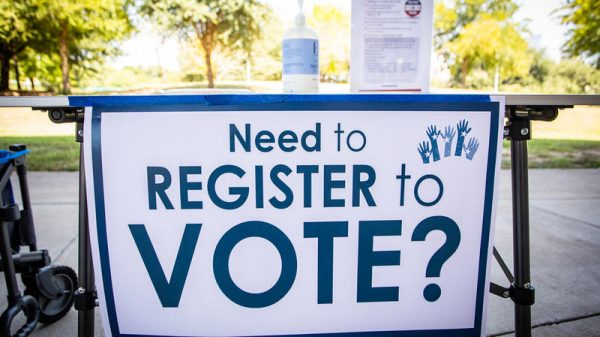
Food Pantry Aid from The Green Apple Pantry Organization
“We’ve never been busier than we are right now,” Marie Ochaba, the chief organizer of the pantry of the Church of God on West Main Street, stated, “not just my pantry, but every pantry.” “I’m probably adding 20 to 25 new members a month.”
The increased demand is partially attributed by food bank leaders and food pantry organizers to the elimination of COVID-19 emergency SNAP assistance. The supplementary allocation, which expired in March, provided a second monthly payment to households already receiving benefits from the government’s Supplemental Nutrition Assistance Program, formerly known as food stamps.
Inflation and the season also contribute to this loss; according to authorities, need usually rises during the winter holidays.
“You still have to pay rent even if you live in a senior high rise,” stated Ochaba. “You still need to buy groceries, and you still have access to gas, water, and electricity.” The expense of living, in my opinion, is at its highest point ever. In my lifetime, I can’t recall seeing it this high. When you go shopping, you might leave with just one thing and $20 in your pocket.
Higher numbers
The demand has fluctuated since the start of COVID in 2020, but it has stayed strong for food banks and smaller food pantries run by churches.
The CEO of the Westmoreland Food Bank, Jennifer Miller, said that although the influx decreased slightly during the early stages of the epidemic when more individuals obtained SNAP benefits, it has now “come back tenfold.”
“We used to see between 5,500 and 6,000 families a month, but now we see 8,000 families every month (pre-COVID),” the spokesperson stated. “We are significantly less in food products provided. Donated monies are likewise declining for us. Right now, any kind of donation is much welcomed.
According to Miller, food banks’ clientele has been negatively impacted by inflation, just as their finances have. Food banks’ resources aren’t going as far as they used to, even though they still purchase goods at a discount.
441 households in 2022 asked the Westmoreland Food Bank for emergency help because they were in dire need of food right away. 520 households have requested the same emergency aid thus far in 2023.
The Greater Pittsburgh Community Food Bank provided 40 million meals to its 11-county service region at the beginning of the pandemic in fiscal year 2020. 42 million meals were served by the food bank in the most recent fiscal year, according to spokeswoman Christa Johnson.
Increased need
The founder, Nancy Wirick, of Feed My Sheep, says that over the past few years, the organization’s numbers have increased at the food pantry located at Forks Zion Lutheran Church in Leechburg.
“We started with just a few families seven years ago, and now we can serve up to 50 families each month,” the woman stated. “That need has unquestionably increased.”
Executive Director Karen Snair of the Allegheny Valley Association of Churches in Harrison reports that the food bank at the organization has been adding new patrons every week.
“Despite the epidemic, we are unquestionably seeing bigger numbers than in previous years. We seem to be getting more people here,” she said. “People were used to receiving that extra pandemic money through their SNAP benefits, but now they are not,” the statement reads. “Food is so expensive.”
According to pastor Todd Ruggles, the Kiski Area Association of Churches food bank receives an increasing number of requests for assistance every week.
“We’ve been getting more calls mid-month asking for help and people signing up since the end of (increased) SNAP benefits,” he added. “People are calling us for help more often than they used to, about once a week instead of once a month.”
Bigger-scale challenges
Even though demand has decreased since the pandemic’s peak, according to Ken Regal, executive director of the Allegheny County food insecurity group Just Harvest, it is still greater than it was prior to COVID-19. While unemployment has decreased, SNAP enrollment has not.
“In general, it indicates that the need has grown rather than decreased when those numbers continue to be at these high record levels that they are at this time,” he stated. “In December 2019, prior to the pandemic, there were 147,000 SNAP recipients in Allegheny County; as of September, that number was 166,000.”
Regal stated that supporting food banks alone will not address the surge in food insecurity.
“We cannot alleviate the magnitude of poverty and hunger through charity alone,” he declared. Even with everyone’s generosity—both during and outside of the pandemic—this is a far bigger issue than any one private charity can resolve. The gap in benefits between before and after the pandemic amounts to almost $17 million per month in benefits that were formerly granted to individuals but are no longer.
The disappearance of the extra-aid programs from the COVID era, he continued, is “both tragic and morally outrageous.”
“We took the decision to use those tools during the pandemic to drastically reduce poverty and hunger as a basic issue for millions of people,” he added. “What we learned from those was that we have the tools as a society in the federal government to do so.” “We gave up on this solution after realizing it was effective.”




![Tyson Foods Plant [Photo: Food Manufacturing]](https://southarkansassun.com/wp-content/uploads/2023/08/iStock_1185520857__1_.5e441daa51cca-600x337.jpg)








![Silverado Senior Living Management Inc. [Photo: Los Angeles Times]](https://southarkansassun.com/wp-content/uploads/2023/10/download-6-4-600x337.jpg)

![China's Wuhan Institute of Virology [Photo: Nature]](https://southarkansassun.com/wp-content/uploads/2023/09/d41586-021-01529-3_19239608-600x337.jpg)














